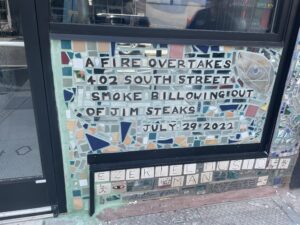Why Flood Insurance is Crucial for Homeowners and Business Owners: Insights from Clarke & Cohen
Flooding is one of the most common and devastating natural disasters that can affect homeowners and business owners alike. Whether you’re a coastal city or a seemingly dry region, floods can occur unexpectedly due to storms, hurricanes, or even sudden heavy rainfall. As licensed public adjusters with extensive experience, Clarke & Cohen has seen the full spectrum of flood insurance claims—ranging from relatively minor water damage to complete devastation. The complexity of these claims, combined with the ever-changing landscape of insurance policies, makes it critical for homeowners and business owners to understand the importance of flood insurance fully.
Understanding Flood Risk: Why It’s Not Just a Coastal Issue
Many people mistakenly believe that they aren’t at risk for flooding if they don’t live near the ocean or a river. However, floods can happen almost anywhere. In fact, according to FEMA, over 20% of flood insurance claims come from areas considered to have a low to moderate risk of flooding. The risk is even more significant for business owners because even minor flood damage can severely disrupt operations. Severe flooding leads to lost revenue and expensive repairs. Additionally for homeowners, a flood can mean the loss of irreplaceable personal belongings and a long recovery process.
Clarke & Cohen has handled flood claims in diverse areas, including those not traditionally considered high-risk. Time and time again, we’ve seen the same theme: homeowners and business owners who lacked flood insurance suffered more significant financial hardship than those who were insured. Flood insurance can be the difference between a quick recovery and a financial catastrophe.
Why Standard Property Insurance Isn’t Enough
A common misconception is that standard homeowner or commercial property insurance covers flood damage. Unfortunately, this is not the case. Flooding is typically excluded from standard insurance policies, meaning any damages caused by a flood—structural damage, ruined inventory, or waterlogged personal belongings—are not covered.
This exclusion can be particularly devastating for business owners. Imagine a retail store that floods after a storm, leaving thousands of dollars in ruined inventory and a building that requires extensive repairs. Without flood insurance, the business owner is left covering these costs out of pocket. For homeowners, the out-of-pocket expenses to repair flood damage can be just as overwhelming, often running into tens or even hundreds of thousands of dollars.
At Clarke & Cohen, we’ve helped countless policyholders navigate the confusing landscape of flood insurance. We’ve seen the enormous financial toll of not being covered and the complexities that arise when handling claims alone. That’s why we urge every homeowner and business owner to evaluate their flood risk and consider purchasing a dedicated flood insurance policy.
Navigating the Complexities of Flood Insurance
Flood insurance is a highly specialized form of insurance, often backed by the federal government through the National Flood Insurance Program (NFIP). The program offers both building property coverage (for the physical structure) and personal property coverage (for belongings inside the structure). While this may sound straightforward, flood insurance policies are notoriously complex.
As public adjusters with decades of experience, we have seen how overwhelming it can be to understand the fine print in a flood insurance policy. For example, NFIP policies limit how much they’ll pay out for certain types of damages. Not all types of water damage are considered “flood damage.” Knowing what is and isn’t covered before disaster strikes is vital. This is particularly crucial for business owners, who may need to account for additional risks like damaged inventory and specialized equipment.
When a flood does occur, navigating the claims process can be even more complicated. Insurance adjusters often look for ways to minimize payouts, leaving policyholders frustrated and under-compensated. Clarke & Cohen’s expertise comes into play here—our role as public adjusters is to advocate for you. We take over the claims process, ensuring that nothing is overlooked and that you receive the total compensation you’re entitled to under your policy. With over a century of experience in flood claims, we’ve built strong relationships with insurance companies. Our experience allows us to know how to approach even the most complex situations.
The Impact of Climate Change on Flood Risks
Flood risks are evolving due to climate change. Coastal areas are experiencing rising sea levels. Inland regions are seeing more frequent extreme weather events, including heavy rainfall that can overwhelm drainage systems. Even areas previously considered “low risk” are facing new flood threats.
For business owners, the stakes are high. Without insurance coverage, a flood could shut down your business for weeks or months. Businesses that never anticipated a flood can reopen with the funds to repair their property. On the other hand, companies with comprehensive flood insurance could recover quickly and continue operations.
Clarke & Cohen continuously monitors trends in climate change and flood risks to provide our clients with up-to-date advice on flood insurance. We recommend reviewing your policy annually to ensure that it meets your current needs. Make sure that you’re adequately covered for new or increased risks.
Protecting Your Investment with Flood Insurance
Homeownership and business ownership are significant investments, and protecting those investments is critical. While flood insurance requires an additional premium, it’s a cost worth considering. With it, you may avoid substantial out-of-pocket expenses that could threaten the future of your home or business.
As public adjusters with over 100 years of experience, Clarke & Cohen is uniquely positioned to help policyholders make informed decisions about their flood insurance coverage. We’ve been through some of the most devastating floods in history. And we are working on behalf of our clients to maximize their claims and ultimately get them the funds they need to rebuild and recover.
Flood Insurance Tips from Clarke & Cohen
To help you navigate the world of flood insurance, here are some essential tips we’ve gathered over our long history in the industry:
- Understand Your Risk: Even if you’re not in a high-risk flood zone, you may still be vulnerable to flooding. Speak with a floodplain expert or use FEMA’s flood maps to understand your risk level.
- Don’t Rely on Standard Policies: Standard property insurance won’t cover flood damage. Make sure you have a separate flood insurance policy, especially if you own a business.
- Consider Additional Coverage: For business owners, basic flood insurance may not cover all the risks you face. You may need excess coverages which can be critical in helping you stay afloat after a disaster.
- Review Your Policy Annually: Flood risks change, and so do insurance policies. Review your coverage annually to ensure it aligns with current flood risks and the value of your property.
- Work with a Public Adjuster: If you experience a flood, the claims process can be challenging to navigate alone. Working with an experienced public adjuster like Clarke & Cohen can make the process smoother and essentially help ensure that you receive the total compensation you’re entitled to.
Flood Insurance is Essential Protection
Flood insurance is not just a wise investment—it’s essential for protecting your home or business from one of nature’s most destructive forces. At Clarke & Cohen, we bring extensive experience with all types of property loss and are thoughtful, sensitive, efficient, and tenacious. We help policyholders navigate the complexities of flood insurance and the claims process. Whether you’re a homeowner looking to protect your family’s future or a business owner focused on minimizing risk, flood insurance should be a top priority.
Don’t wait until the waters rise to consider your options. Contact Clarke & Cohen today to discuss how flood insurance can protect your property and your livelihood from the unexpected.


